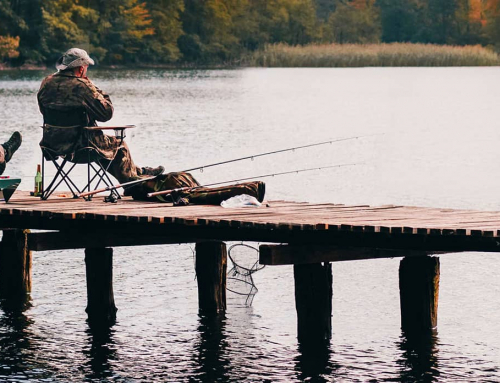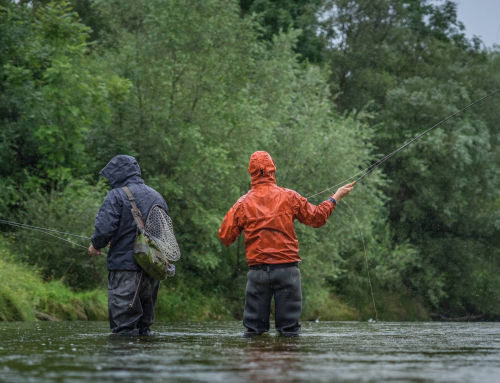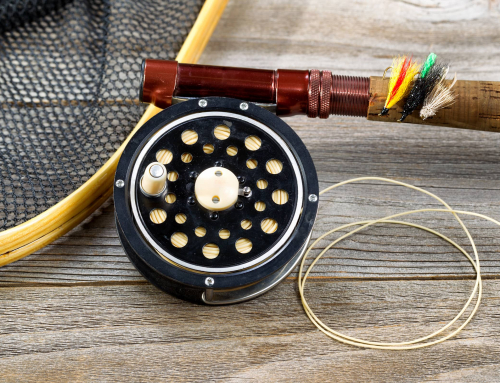We may earn money or products from the companies mentioned in this post at no additional cost to you.
How To Fish Emergers For Trout
Fishing for trout can be a rewarding experience, offering anglers of all levels the chance to connect with nature and appreciate its beauty. Emergers are an important part of any successful fishing trip. They provide a unique opportunity to catch some of the most elusive fish out there. In this article, I’ll share my expertise on effectively using emergers when it comes to catching those tasty trout!
With their subtle movements and gentle rise above the surface, emerger patterns present an ideal opportunity for anglers to get away from their daily lives and relax in nature’s serenity. Whether you’re using nymphs or dry flies, properly rigging your line with emergers will give you a much better chance at success. By understanding the basics of casting and presentation techniques and being familiar with different types of fly lines, anyone can learn how to land that trophy-sized trout successfully.
By following these simple tips, you’ll unlock the freedom of mastering one’s craft – something every outdoor enthusiast strives for. So gear up and make sure your line is ready; let’s go fishing!
Equipment Required
Trout fishing has been a passion of mine for as long as I can remember. It’s the perfect adventure to get out into nature, relax and find peace in the tranquility of the river or lake. To effectively fish emergers, you need an understanding of your equipment and materials used when tying flies. This includes fly-tying tools such as bobbin holders, bodkins, hackle pliers, and whip finishers; rod reel setup with leader line, tippet material, strike indicators, and flies; as well as all of the necessary materials needed to tie your own flies. To have success while trout fishing using emerger patterns, it is important to understand insect emergence patterns so that you can properly imitate them on the water.
Understanding Insect Emergence Patterns
Fly fishing for trout is an art form, and a key part of this artform is understanding insect emergence patterns. It is important to think about the life cycle of aquatic insects when you are fly fishing for trout; as these creatures provide food sources for trout.
Understanding how mayflies and caddisflies emerge from their larval stage in rivers can help you become a more successful angler:
Mayflies usually hatch during mid-morning or late afternoon on warm days, with some species emerging at night.
Caddisflies typically emerge in late afternoons or evenings, but they often have multiple emergences throughout the day.
Trout tend to feed most eagerly on newly emerged insects as they first leave their nymphal cases and begin flying around.
When selecting your flies while fly fishing, match the size and coloration of the natural insects that are currently hatching in order to increase your chances of success.
If you observe rising fish near the surface of the water, be sure to throw out one of your dry flies immediately!
Overall, it pays off to pay attention to insect activity and behavior so that you know which type of emerger will work best for your situation—this ensures that you’ll maximize your time spent on the river bank. Fly-tying techniques for emergers involve creating intricate patterns that imitate real insect features such as wingspan, body shape, gills etc., allowing them to blend in naturally with their environment – making them irresistible prey!
Fly-Tying Techniques For Emergers
Fly-tying techniques for emergers are essential to successful trout fishing. You can create a realistic fly pattern that will entice the fish to strike with the right materials, dubbing techniques, and thread tension.
Material selection is key when tying an emerger pattern. You want to select materials that blend in with the surrounding environment; natural colors such as olive green or brown often work best. Hanf fibers, hackle feathers, and CDC feathers are also great options for creating lifelike emergence patterns. Also, consider using flash material such as Krystal Flash or Angel Hair for added attraction.
Thread tension plays a vital role when tying your flies, too; this helps keep your materials secure and gives them shape and movement underwater. Once everything is secured on the hook, use scissors to cut off excess material, which allows each element of your fly to move freely while submerged in water – making it more attractive to trout.
To ensure success with these emerger patterns, practice good presentation technique by casting upstream of where you think the trout may be located. Doing so gives the fish plenty of time to notice and react accordingly before your line gets there – increasing your chances of landing a catch!
How To Present The Fly
Presenting a fly when fishing emergers for trout requires precision and finesse. Fly casting must be tailored to the presentation of the drifting fly, ensuring it has a drag-free drift. As an angler, you need to be aware of your environment and make quick adjustments to deliver accurate casts with graceful mends or pauses in line control. This will allow the current to take the fly downstream at the same speed as other natural insects. You may also have to adjust your distance from where you are standing on the bankside or wading out into deeper water in order to achieve this effect.
To further enhance your presentation, practice short roll casts, which will help create a slack line that allows more time for the fish to inspect before deciding whether or not they’ll take it. Again, the goal is to get down near their level without spooking them so they can better see what is being offered up by way of food items – a tasty morsel in the form of an emerger pattern!
Locations And Times To Target Trout With Emergers
For trout fishing, choosing the right location and timing is key to success with emergers. Rivers are a great place for fly-fishing, as they tend to provide plenty of cover that can hide your presence from wary trout. The best time to target these fish is during their season when water temperatures are in an ideal range; typically this runs from late April through October depending on where you live. Though it’s important to note that the peak feeding times will vary based on temperature and light levels, so plan accordingly.
When looking for good locations, focus on areas with a reduced flow, such as pools, eddies, or slow sections of the river, since this allows food items like insects to linger longer in one spot – prime conditions for emerger patterns! Also, look for spots along bankside vegetation, as this provides easy access for emerging nymphs and larvae, which often make up a large portion of a trout’s diet. Pay attention to any hatches taking place throughout the day, too – if you see lots of rising fish then get ready because there will be more than enough opportunities to catch them using emergers!
How To Fish Emergers For Trout: Conclusion
As an expert trout angler, I can assure you that fishing with emergers is one of the most effective ways to catch a trout. It takes some practice and patience, but once you understand how these flies work and when to use them, it will become second nature. With the right equipment, knowledge of insect emergence patterns, fly-tying techniques for emergers, and knowing where and when to target trout with emergers, you’ll have all the tools necessary to increase your success rate while out on the water.
So don’t hesitate any longer – get out there and start catching fish! Start by understanding what types of insects are hatching in your area at different times throughout the year. Then tie up various types of emerger patterns using natural materials like wool or deer hair along with other more synthetic components such as foam or rubber legs. And lastly, learn how to present and drift this pattern so that it mimics a real emerging insect as closely as possible.
With just a little bit of effort invested into learning about emergers, you will find yourself catching more fish than ever before! So put everything together – proper equipment, knowledge of insect emergence patterns, tying techniques for emergers, presentation strategies – then head out onto the river armed with the confidence that comes from being well prepared. Good luck!






